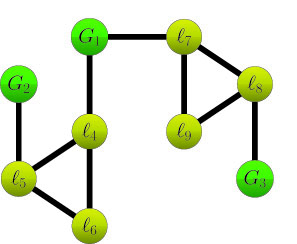Invariant-Manifold-Based Distributed Voltage Regulation and Frequency Regulation of Islanded Microgrid
PhD student Madi Zholbaryssov with advisor A. Domínguez-García
We propose a distributed controller for voltage regulation in islanded ac microgrids with lossy lines and present stability analysis without assuming decoupled operation of the frequency and voltage controllers; the frequency controller achieves the active power load-sharing by driving the power flows to a certain manifold, and the voltage controller moves along this manifold and adjusts the voltage magnitudes at the inverter buses to maintain a healthy voltage profile throughout the microgrid, i.e., voltage magnitudes at all buses are within some prescribed limits. Since voltage regulation and reactive power sharing are known to be conflicting objectives, we pursue a voltage regulation objective. However, reactive power sharing can be recovered to some extent by tuning a certain parameter in the voltage controller.
Consider a 9-bus microgrid, the topology of which is shown in Figure 31. Nodes G1, G2, and G3 correspond to inverters, with the remaining nodes corresponding to loads. In Figure 32, because of the load perturbation at time t = 0.05 s, V5(t) < its lower limit and V7(t) > its upper limit, which triggers the proposed voltage controller. After a certain time, the voltage controller is able to push the voltage magnitudes at buses 5 and 7 back within their operational limits. Note that in Figure 33, the secondary frequency controller is able to drive
the active power injections to the desired references while the voltage controller is being executed. This research is supported by the Illinois Trust Institute.


